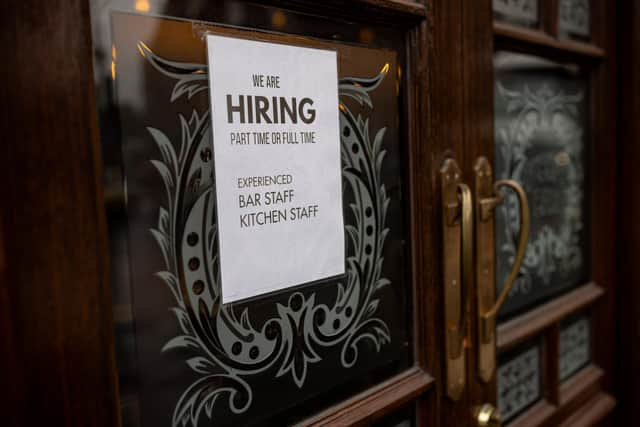Scots labour market sees 'no signs of momentum cooling' after hiring uplift
and live on Freeview channel 276
Permanent placements rose at a near-record pace, with the index for this metric 71.5 in the month and the third-highest on record, the latest Royal Bank of Scotland (RBS) Report on Jobs survey revealed. Scotland also continued to see a quicker rise in permanent placements than the UK-wide average.
The jump in temp billings to 57.5 accelerated from January's 17-month low and was steep overall, enjoying an 18th straight monthly rise, amid reports that companies were pushing the button on new projects and demanding additional staff.


Advertisement
Hide AdAdvertisement
Hide AdDemand for staff also picked up, with permanent vacancy growth hitting the fastest since November, and the search for temp staff also rising at a historically marked pace. IT and computing recorded the fastest rise in need of both types of role.
Staff availability deteriorated further, with the rates of decline remaining fast despite easing since January, and RBS cited anecdotal evidence linking the latest fall in permanent candidates to skills shortages and a reluctance to change roles due to uncertainty surrounding the pandemic.
As for wage slips, strong demand for workers placed further upwards pressure on rates of pay in February, and for the 15th time in as many months, average salaries awarded to permanent new starters increased, for example. The rate of starting salary inflation was the second-highest on record, while the latest uplift in short-term pay rates remained sharp.
RBS chief economist Sebastian Burnside said: “The Scottish labour market recorded a further strong uplift in hiring activity in February, as a further near-record rise in permanent staff appointments occurred alongside a sharp pick-up in temp billings.
Advertisement
Hide AdAdvertisement
Hide Ad“At the same time, candidate availability continued to decrease rapidly for both permanent and temp staff, albeit at softer rates than in January, while vacancy growth accelerated. Strong demand for scarce candidates subsequently led to further upwards pressures on pay.
“Midway through the first quarter of the year, the labour market remains in a strong position with no signs that momentum is cooling.”
A message from the Editor:
Thank you for reading this article. We're more reliant on your support than ever as the shift in consumer habits brought about by coronavirus impacts our advertisers.
If you haven't already, please consider supporting our trusted, fact-checked journalism by taking out a digital subscription.
Comment Guidelines
National World encourages reader discussion on our stories. User feedback, insights and back-and-forth exchanges add a rich layer of context to reporting. Please review our Community Guidelines before commenting.
